Get easy ideas for the maintenance of garden areas, whether it is a front yard, back yard, vegetable garden or flower garden. These low-maintenance gardening tips for keeping up with garden tasks are simple, actionable, and will help you look like a gardening success with minimal effort. Read on to get the simple secrets for the maintenance of garden plants and grounds.
Table of Contents
My Need for No Fuss Maintenance of Garden Areas
During the middle of the summer, I used to get overwhelmed with the number of garden tasks that needed to be done. The blueberries and raspberries were hanging thickly on their branches, waiting to be picked, and the radish row was starting to go to seed. I was often hit hard with GARDEN GUILT (it’s much more ominous when the words are written in capital letters).
Every spring, things would start out just fine. I had a great time planting seeds and seedlings. I also enjoyed watering and watching sprouts develop into thriving garden plants. Then, when everything, including the weeds, seemed to be under control, suddenly something needed to be harvested. At this point, I was often overcome with guilt because I didn’t always take the time to pick all that I should have picked. I had to devise a plan. That’s when these low-maintenance gardening ideas came to my rescue.
This post contains affiliate links, which means I may earn a small commission from qualifying purchases at no additional cost to you. Please read my Policies page for more information.
Do You Suffer From Garden Guilt?
It’s sad to see vegetables and fruit go to waste, but it used to happen in my garden far too often. Does this happen to anyone else? I could not keep up with the harvest, even when there were four of us at home. I froze fruit and vegetables, I canned, I made jam, gelato, and in recent years, I even dehydrated some garden produce. We were very fortunate to have more produce than we needed in the garden, but it was such an awful feeling to see it withering away, not being used. A couple of years ago, knowing that there would soon be just two of us at home most of the time, I decided to make some changes. Here are my simple low-maintenance gardening ideas for maintaining garden areas no matter which zone your garden is in.
Easy Maintenance of Garden Tip 1: Get the Right Tools
One thing that helps these low-maintenance gardening ideas happen is having the right tools. Good quality tools are crucial to getting garden tasks done quickly and easily. When you buy garden tools that last, you end up spending less money over the long term. Here are some of my favorites, and they need to be sturdy because they get used so often. First on the list are my handy Felco pruners. I use these for cutting flowers for bouquets, trimming spent blooms, cutting bean vines when cleaning up the fall garden, and harvesting squash. I have had mine for about 20 years. They still cut marvelously well.
My next, most-used garden tool is a hand trowel. I have gone through many, many trowels in my quest to find one that will last. I use my trowel for planting seeds, digging small holes when transplanting seedlings, and for the dreaded task of weeding. Get the sturdiest one you can find.
My third recommendation is a good quality watering wand. This tool saves me a lot of time and energy when watering container plants and the vegetable garden. Since the layout of the vegetable/cut flower garden changes every year, it would be a lot of work to put a drip system out each growing season. The next best thing is watering with a wand. It goes quickly, and it helps me to keep a closer eye on any areas that might need weeding. If you get one that extends to a longer length and has an adjustable head, that is a definite plus.
Easy Maintenance of Garden Tip 2: Weed Smarter, Not Harder
Weed efficiently. If you get a jump on weeds in the spring, you have less to worry about in the summer during harvest time. To make weeding more enjoyable and comfortable, consider purchasing a padded garden kneeler or bench. An essential weeding tool I use constantly is a sturdy trowel. One of my favorite new additions to my weeding arsenal is my pair of clawed garden gloves. They make short work of the weeds that return each year, like the hairy bittercress pictured below.
Weeding time goes by more quickly when I listen to some favorite podcasts using my phone and wireless ear buds. Finally, to maintain the weeded areas in your vegetable or cutting garden, you could spread a layer of newspaper between garden rows and place lawn clippings on top throughout the summer.
Easy Maintenance of Garden Tip 3: Plant Easy-Care Options
If your budget allows, consider planting more ornamentals rather than plants that need to be harvested. I switched from growing regular green beans that needed to be harvested to ornamental scarlet runner beans. Scarlet runner beans have bright red blossoms. They are edible, but I prefer to think of the plants as annuals similar to the ones in our decorative planter arrangements. If you choose to harvest them, they have a delicious smoky flavor. I just harvest a few of them for seed-saving purposes. I mainly enjoy their colorful blooms.
Easy Maintenance of Garden Tip 4: Plant Strategically
Our vegetable garden has changed over the years. The trees at the south end have made that part of the garden too shady to grow many things. The reduction in garden size happened rather naturally. I probably would not have made the garden smaller willingly. The trees just got too big. I still plant a few, more cool-weather vegetables, but I decided to just let the lower part of the garden lapse into a mainly empty patch of dirt with a few squash plants. We still use the rototiller on it in the spring, to keep the weeds down. It’s a great space to let those vines ramble. You can’t get lower maintenance than that.
Easy Maintenance of Garden Tip 5: Plant Fewer Seeds
When I combine two or three types of vegetables into one row so that each type of seed takes up just a partial row. If you end up with a lot of extra seeds, you might find a seed exchange to donate them to. Our local library has one available to the public, housed in the old card catalog.
Consider replacing some vegetables with flowers. I planted more rows of flowers and fewer rows of vegetables. We now have a wildflower row that is outside of the rototiller boundary that has come back to bloom for the second time. It’s the first part of the vegetable garden that people see when they drive down our driveway. Guess what? I don’t need to harvest anything from it! The flowers are colorful in a bouquet, but they look just as pretty when left to bloom in their row. I don’t feel any guilt about leaving them in the garden to go to seed.
We also had a spectacular row of hollyhocks this past year. The great thing about hollyhocks is that they are perennials. When the blooming season was over, I transplanted them throughout the yard. I’ll hope to see them again this coming summer.
Easy Maintenance of Garden Tip 6: Move Plants when Needed
Be brave about moving or replacing plants that aren’t thriving. For years we tried to grow hybrid tea roses in a sunny location in our yard. The poor plants were always diseased, got nibbled on by the deer, and had aphids. We live in a wet climate, and they just did not thrive. They barely limped along. We reluctantly decided to pull them out and replaced them with dahlias. We also planted old garden roses, which are much more disease and pest resistant. Even though it was a tough decision, we are glad we did it. If you want a low-maintenance garden, plant something that is going to do well. As I have written before, I learn by trial and error (and error and error).
Easy Maintenance of Garden Tip 7: Create Low-Maintenance Garden Accents
Create easy, inexpensive garden decor. For decorative garden touches, consider designing items that can remain in the garden year round or items that can be reused every year. Did the garden towers in the picture of the scarlet runner beans catch your eye? They are super easy to make and can be constructed from reclaimed deck wood. We have had ours for about 10 years, and they are still holding up well. They fold for easy storage and provide a nice vertical accent to the vegetable garden. For the directions and more details, go to the post about DIY pole bean towers.
To add a personal touch to any garden area, design your own garden stepping stones. If you follow the easy steps to make garden stepping stones, you will be able to get pleasure from these garden accents for years to come.
Easy Maintenance of Garden Tip 8: Divide Plants
Rather than spending time and money purchasing new plants, divide what you have. Take a look at the plants that are your favorite low maintenance plants and learn the best way to multiply your supply. Some of my favorite perennials are easy to divide, like pulmonaria.
Dividing easy-care plants is an economical way to fill your garden spaces while keeping your gardening tasks manageable.
Easy Maintenance of Garden Tip 9: Share the Harvest
Find a place to take your extra garden bounty. What if there is still excess produce from the vegetable rows? I can’t believe I didn’t know about this until a couple of years ago, but it makes a lot of sense. In my town, we have an Action Center with a food bank that is locally run and takes any garden produce, even the kind that my family is not especially keen on, such as squash. This is such a blessing because if anything thrives in my garden, it is usually the vegetables that are disliked by one or more members of my family. Some of the vegetables are grown with a single person in mind. I grow radishes for my husband and kale for myself. I always end up with extra of something (usually zucchini, but I have a plan for that).
Fortunately, the people at the Action Center are happy to take whatever I bring in. Even if they have had 50 other zucchini squashes donated the very same day, they are still glad to take mine. Thank you, Action Center, for helping me overcome my garden guilt. Now, here is my final guilt-free gardening idea for you today.
Easy Maintenance of Garden Tip 10: Have a Plan
Put together an inexpensive garden journal, planner, or log book. Whether it is a plan for completing garden tasks or for planting, you will be more efficient if you have some way to keep track of your ideas. A garden journal logbook can be customized to meet your needs. You can also design your garden layout online or on paper. To get you started, here is a free, simple garden planner you can print. It has a page for each month, along with notes pages. I put mine in a 3-ring binder and often take it out to the garden with me when I am planting.
Get the garden notebook!
Need More Planting Ideas?
Check out the tips for the best companion plants for eggplant to learn what to grow with those beauties. If you like the idea of companion planting, you might be interested in reading about the best companion plants for pumpkins, sunflowers, garlic, asparagus, rosemary, thyme, or the best companion plants for lavender. Get tips for growing stunning dahlias. Are you a beginning gardener? Try planting some foolproof, easy-care perennials, or learning about the best companion plants for columbine. There are so many exciting plants to grow!
What Are Your Favorite Low-Maintenance Gardening Ideas?
What about you? Do you have any gardening ideas for me? If you have any ideas, please take the time to share your thoughts. I’d sure enjoy it.
Have a wonderful week, and may all of your easy maintenance garden areas thrive!
Lisa Mitchell is a wife, mom, and school librarian who likes to grow fruit, vegetables, and flowers on her family’s small Pacific Northwest farm. To learn more about what this website has to offer gardeners, click on over to the Garden page.
Want more great garden, food, or travel ideas? Follow FluxingWell on Pinterest, Facebook, Instagram, and X for the latest posts, tips, and inspiration.


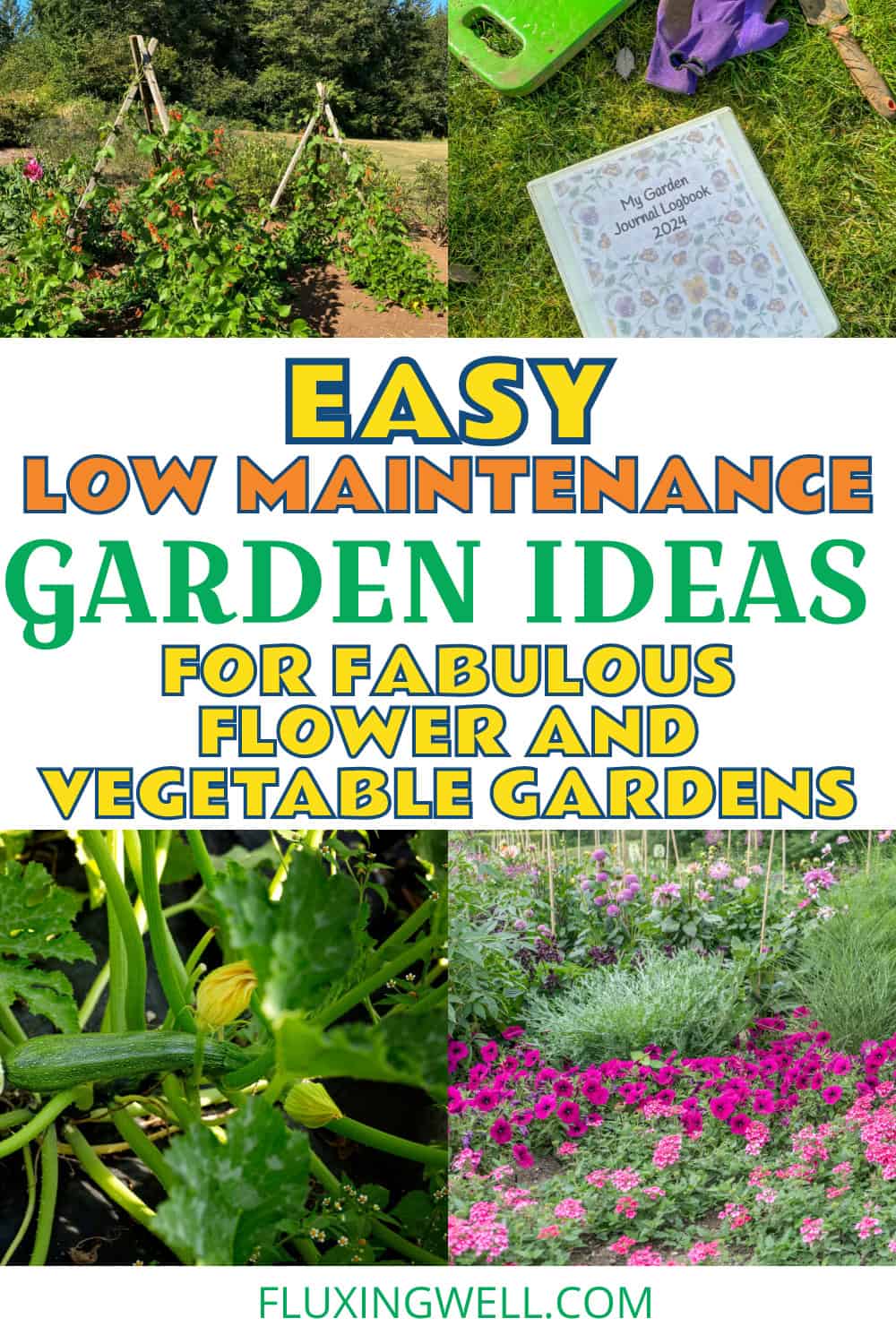



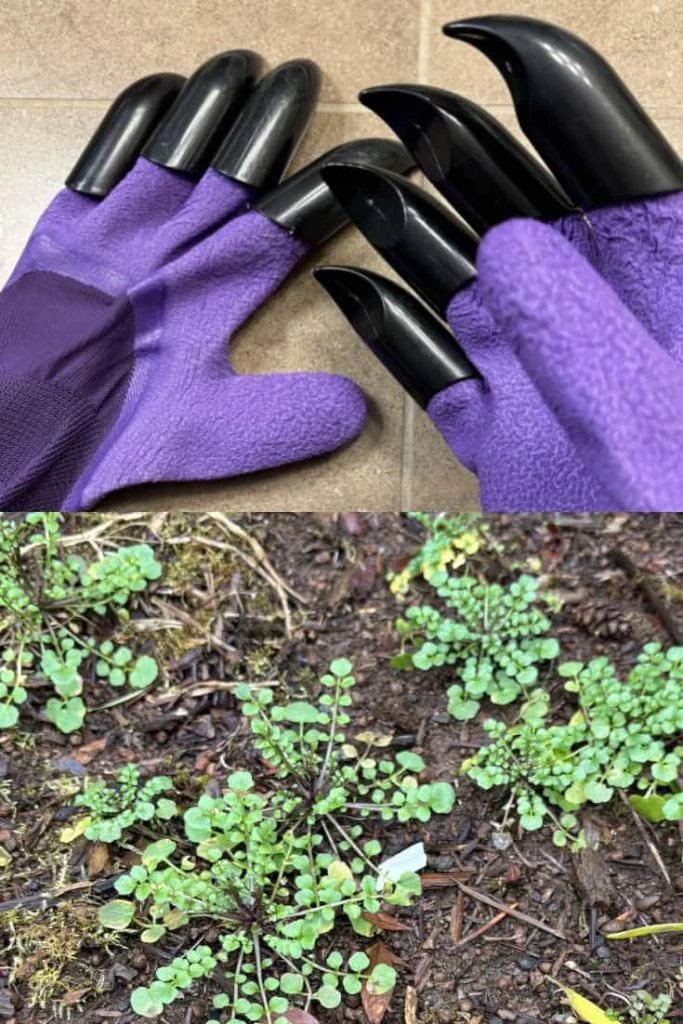

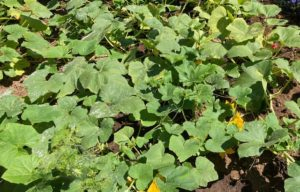



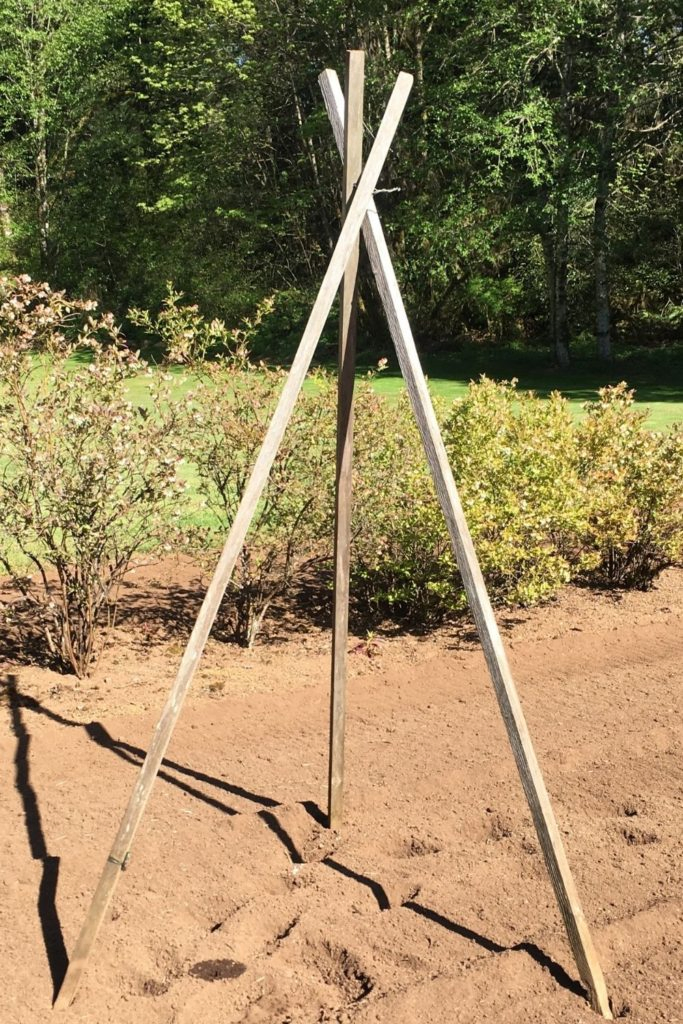
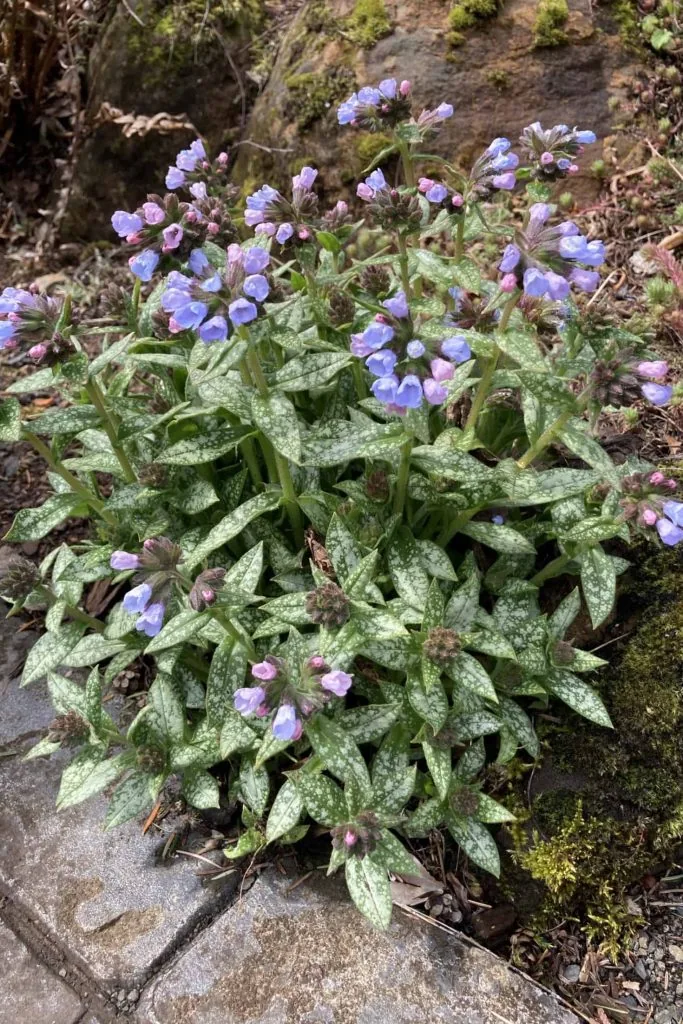
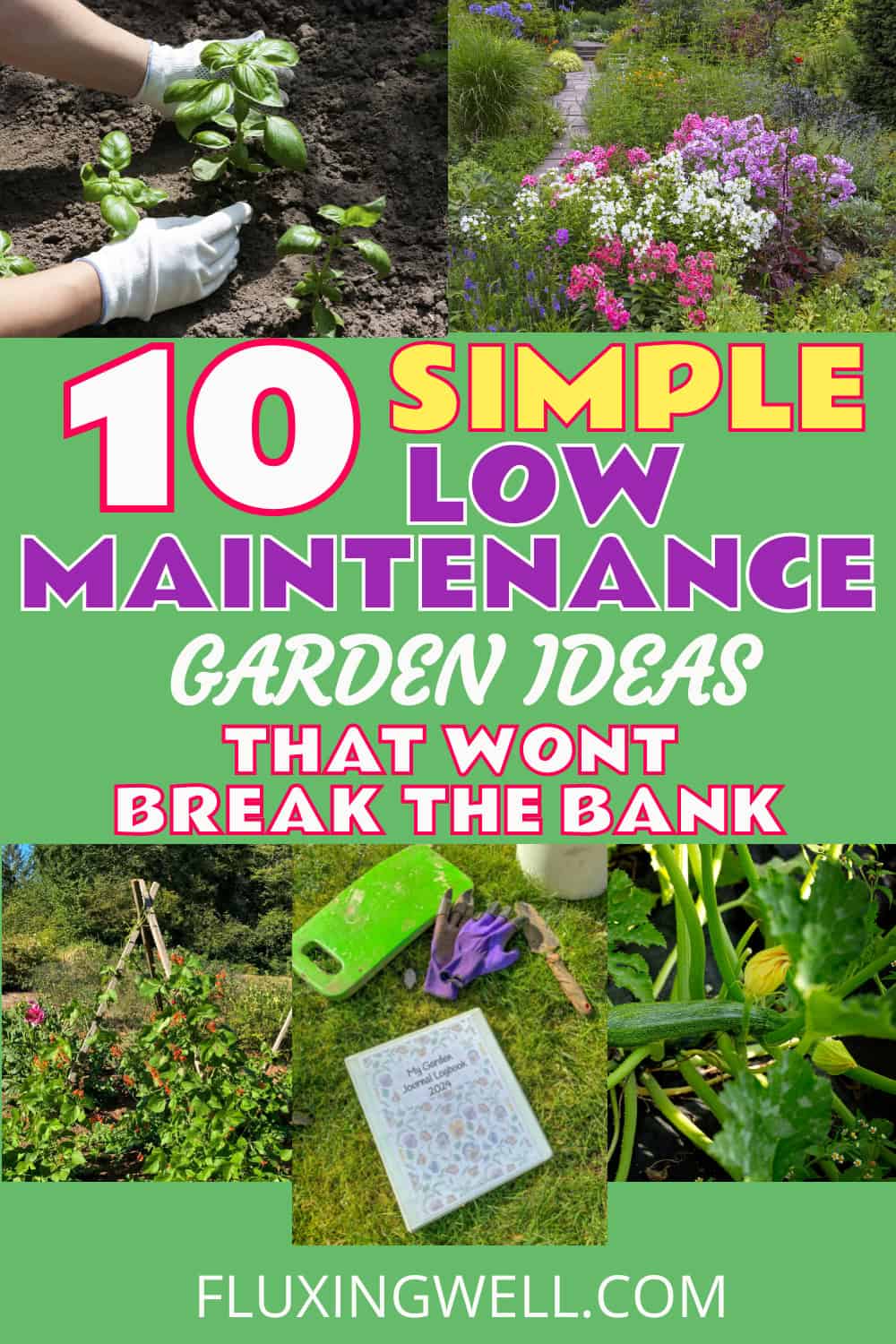
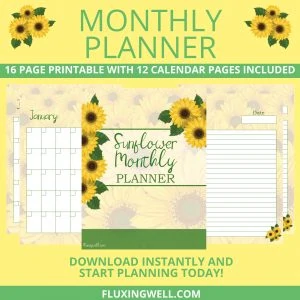

I love all these easy low maintenance garden ideas for flower and vegetable gardens. I never heard the term garden guilt before, but I can totally understand the feeling. You really offer so many helpful tips to maintain my garden and harvest it well.
Great! I am glad you can use the ideas.
These low maintenance gardening tips were very helpful. We are about to plant our garden again. Thanks!
Nice! I hope all of your gardening endeavors meet with great success.
I love your gardening tips and this is another example of a post full of helpful tips and ideas low maintenance gardening ideas. Thanks for sharing!
You are most welcome. I am always happy to share anything that works well.
Great ideas for maintaining gardens. I want to check out those claw gloves – never saw those before.
They are amazing! I am feeling pretty good about my weeding so far this year.